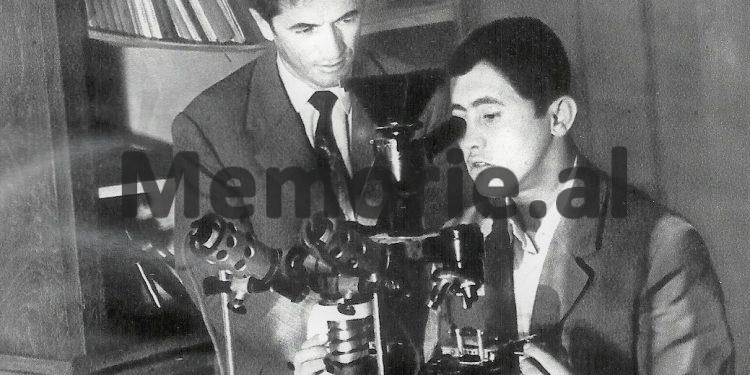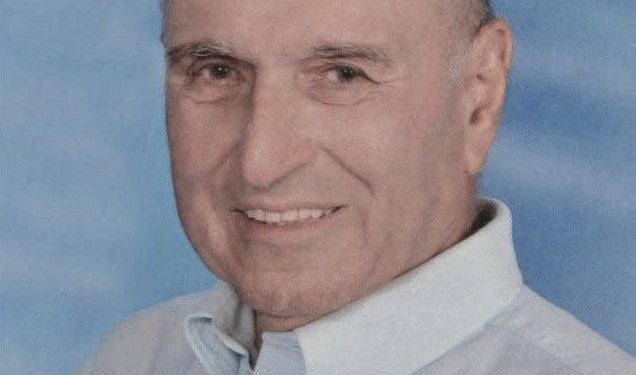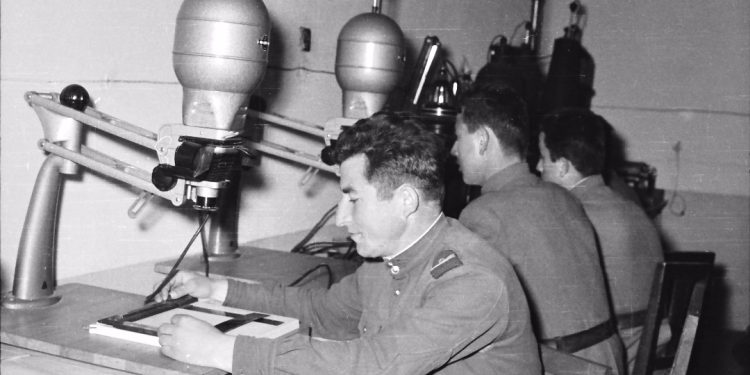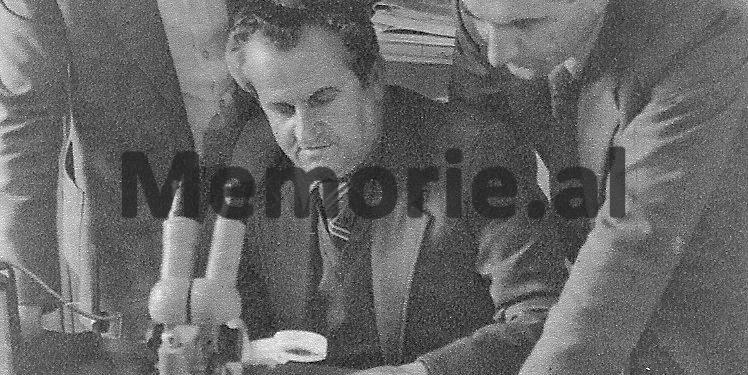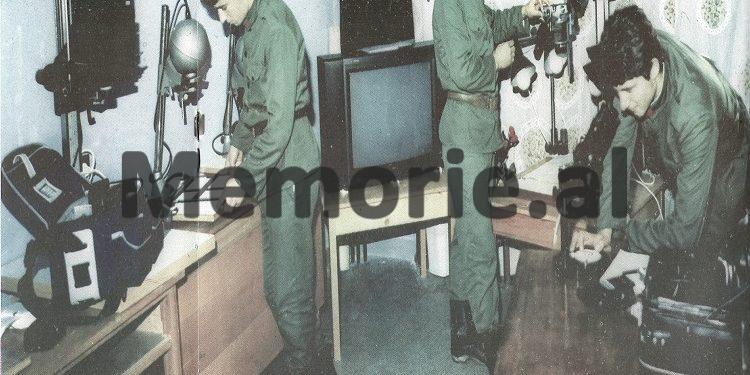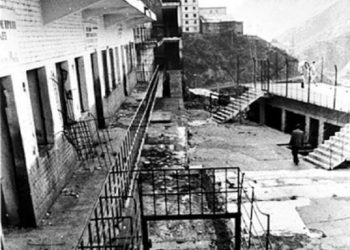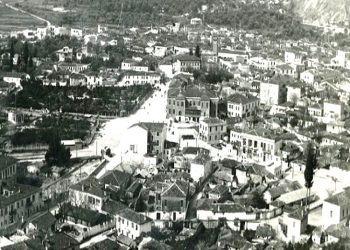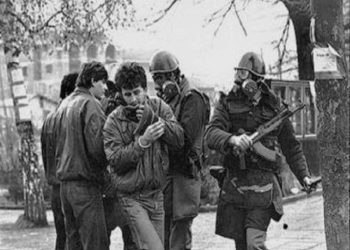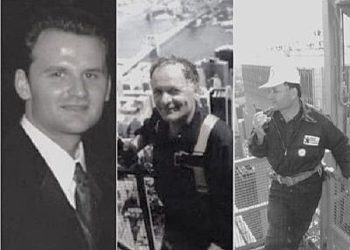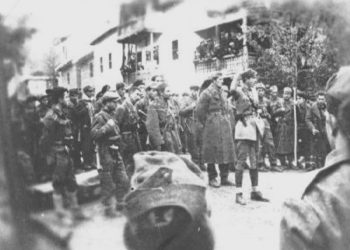By Prof. Dr. Bardhyl Çipi
Part fifteen
SCIENTIFIC EVIDENCE OF STRIKING DEATHS
(Public figures, victims of the dictatorship, other events)
Memorie.al / Bardhyl Çipi, one of the most experienced specialists in our country in the field of Forensic Medicine and Bioethics, their teaching, and the training of young forensic experts. Some of his patients include: victims who were killed on the border while trying to escape the communist dictatorship, but whose hidden corpse was discovered with the help of his loyal dog; the interned woman who committed suicide out of despair; Kosovan citizens killed by Serbs because they sought to live free, not to be humiliated and tortured by them; residents who lived 1500 years ago in Albania; the University of Tirana professor who was robbed and murdered; etc. A book on death and the scientific evidence for discovering its different types: murder, suicide, cases stimulated and forced by the communist regime, murders and genocides against Albanians by their neighbors, fresh or decomposed and skeletonized corpses. Documents of the deaths of prominent figures: Kennedy, Lincoln, Napoleon, Lenin, Trotsky, etc., and other events involving the deaths of ordinary people. Knowledge about post-mortem changes and the examination of corpses in the world and in our country, from a historical, ethical, forensic, and legal perspective. Some of his recent books are: “Manuali i Mjekësisë Ligjore” (Forensic Medicine Manual) (2015), “Bioethics in Albania nowadays” (2016), “Tranzicioni shqiptar në lupën e mjekësisë ligjore” (The Albanian Transition through the Lens of Forensic Medicine) (2018), “Mjekësia Ligjore Kriminalistika” (Forensic Medicine Criminalistics) (2020).
Anthology of Forensic Examinations of Corpses from Various Incidents in Our Country
The Remains of the “Cold Cave” in the Village of Gjuras, Dibër District
During my long career in the professions of anatomist and forensic doctor, starting in the early years after graduating from the Faculty of Medicine as an assistant in the Department of Anatomy, I began to deal with issues of Anthropology. As is known, anthropology, which was not very familiar in our country at that time, is considered the science that studies everything related to the human being, including the structure and features of the human body.
Thus, I and my colleagues in the Department of Normal Anatomy began studying it, as it is very close to anatomy, which also studies the structure of the human body for medical students, but with the aim that they clearly understand the changes its parts undergo from diseases and treat them as effectively as possible.
Meanwhile, Anthropology, especially the part called Physical Anthropology, also studies the human body and its parts, but with the aim of clarifying how its evolution occurred from animals to humans, from the first humans to modern humans, what the differences are between different groups of people (races), as well as those who lived in previous historical periods, the diseases from which earlier people suffered, and clarifying their connections with modern people, etc. For all these problems, it relies on classical methods, mainly the study of human remains (bones). Its sub-divisions include: Forensic Anthropology and Forensic Odontology, Molecular Anthropology (DNA), Paleoanthropology, etc.
Finally, another sub-division exists, unrelated to human anatomy, called Socio-Cultural Anthropology, because the human being, unlike animals, besides the body, possesses reason, consciousness, and thought, which are reflected in the social, cultural, customary, and linguistic life of man.
I extended these explanations to understand the reason why I, along with other colleagues from Normal Anatomy, began the anthropological study of the numerous bone materials taken from the church of the village of Kreshovë in the Përmet district, which belonged to inhabitants who had lived there for more than a century. The methods we used in determining the age, sex, race, etc., of about 100 skulls from this church, were the same ones applied in cases of identification of unknown bone remains examined by forensic medicine.
Therefore, I began to use the knowledge I gained there in all the different forensic cases in our country, from the time I was an assistant in anatomy and later as a forensic doctor until 2015. But in a very rare case, it might have happened that the remains sent for forensic examination turned out to belong to people who lived in previous historical periods. These cases held important value for purely anthropological study.
One such case was an event in 1996, concerning the examination at the Forensic Medicine Service of a large number of skulls and other parts of human skeletons found in the cave called: “Shpella e Ftohtë” (Cold Cave), in the village of Gjuras, Peshkopi (Dibër) district. To enter this cave, as the forensic doctor who had been there told me, was very difficult. Its entrance was extremely narrow, and he, along with other police officers, had entered by crawling. Inside, they saw a very large number of bones, over 50 skulls and other skeletal parts. They managed with difficulty to retrieve 10 skulls and some other bones. After packaging them, they brought them to Tirana for the purpose of a forensic expertise.
Immediately after this discovery, it was suspected that these skeletons might belong to political persecutees of the communist regime who had been tortured and killed in a military unit located not far from this cave. Their corpses might then have been hidden in this cave. At that time, much was written in our press about these suspicions arising from this discovery.
But another version that emerged then was that they might belong to victims of the Balkan wars of the last two centuries. The Peshkopi police requested a forensic and anthropological expertise of these remains. For this, I placed these human skeletal parts, which were sent to the Forensic Medicine Service, lining them up according to their type, in the third-floor hall of the Forensic Medicine Service and began their examination.
They consisted of 10 skulls, 4 mandibles, 18 long bones (mainly femurs), 2 parts of pelvic bones, some other bones, and a skeletal part of the head of an animal of the type: sheep, goat, which also had two preserved horns.
The examination in this case, which belongs to the field of forensic medicine and Forensic Anthropology, aimed to determine the human provenance, age, sex, stature, race of the persons they belonged to, other characteristics, and any injuries they might have, along with the means of their causation. But in this case, determining the time of death would also be very important.
From the careful examination of these human-origin remains, which were partially eaten and destroyed, with surfaces colored somewhat reddish in places, I was able to determine that based on the number of skulls, they belonged to at least 10 individuals of both male and female sexes. Two were of childhood ages, while the others were adult ages: young (20 years) up to older ages (40 – 50 years) and more.
The stature resulted in being from 1.6 m to 1.7 m; according to the anthropological features, they belonged to European white races. On these bones, with the exception of the eating and destruction by various factors due to the long stay there, no mechanical damage from sharp objects or firearms with the characteristics of injuries caused while alive was observed.
This indicated that they had no signs of violent actions being exercised, which categorically excluded the possibility that they belonged to political persecutees of the communist era, tortured and killed, or victims of the Balkan wars.
In fact, to clarify their true origin and address these suspicions, it would be very important to determine the time of death. This is because when death occurred more than 70–80 years ago, and if it was criminal, the murderer who committed the crime must also have died, and there is no reason for this matter to be pursued by the justice authorities, such as the Judicial Police and the Prosecution.
Thus, for this determination, I inspected them very carefully. The bones were dry, partially eaten, with no soft tissue residue on their surface, and also, the signs of fat were absent in their depths, in the spongy (cancellous) tissues.
I supplemented this data with two analyses: the benzidine test and the fluorescence test, both of which resulted as negative. All these characteristics confirmed that the time of death must have been remote. Another piece of information in favor of this conclusion was the absence of any dental work (such as fillings, dentures) on the teeth and molars of these skeletons, as well as the relatively young life expectancy of the individuals of these skeletal remains, etc.
For this reason, in the report I compiled, the documents I sent to the General Prosecution Office, and the contacts I had with the leaders of the Ministry of Internal Affairs, I emphasized that these bones were from a remote time, up to a century or more, which categorically excluded them from being bone remains of victims of crimes committed by the communist regime or earlier periods.
Nevertheless, I proposed to these authorities to organize the retrieval of all the remains from this cave, as well as the sending of their samples to other countries, such as Italy, France, etc., to initiate a more accurate determination of the time of death.
Not only that, but perhaps driven by my knowledge in the field of physical anthropology, acquired especially during my work in the Department of Normal Anatomy, I began to personally follow up on the solution of this case. As is known, for old archaeological or bone materials, their age before one thousand or several thousand years is determined with considerable accuracy by the radiocarbon dating method ().
For this, I first went to the Institute of Nuclear Physics, located in the area near the Institute of Hygiene. I was kindly received there by one of its directors, a specialist in the field of analyses with radioactive materials. Unfortunately, he told me that he could not perform this analysis because the radioactive reagent was missing from his laboratory at that time.
That same year (1996), taking advantage of a one-month specialization at the Department of Forensic Medicine of the University of Lyon in France, I secretly placed some bone samples from the “Cold Cave” in my travel suitcase.
During my stay in Lyon, the Director of the Institute of Forensic Medicine, Prof. D. Malicier-whose kindness and help towards me I remember very fondly-at my request, organized a meeting with the distinguished anthropologist Prof. R. Perrot.
His laboratory was located in two communicating rooms on the premises of the “Rockefeller” Faculty of Medicine. Dr. Perrot is a genuine biologist and anthropologist. As far as I remember, his laboratory at that time was equipped with anthropological apparatus, various main compasses for measurement, apparatus for measuring angles, osteometric boards, a craniophore for examining and drawing the skull, and the Suckeëey–Brooks kits for determining age by the pubic symphysis. I also had some of these apparatus, such as various types of compasses, osteometric boards, and angle measuring apparatus, along with numerous bone collections, in the Anthropological Identification Laboratory of the Institute of Forensic Medicine in Tirana, which unfortunately were destroyed after my retirement in 2015.
In Dr. Perrot’s laboratory, there were several work tables and shelves filled with skeletons, mainly skulls. He was a simple and polite man. In his Anthropology laboratory, I learned in detail about the work he was carrying out on the skeletal materials he was studying; at that time, he was using the “Gerasimov” reconstruction method and performing numerous expertises, comparing the measuring and descriptive data of the skull with those of the persons these skulls were thought to belong to.
He even gifted me some articles and one of his latest works, a manual on anthropological examination methods. Afterwards, he listened to me very attentively about the case of the bones from the Dibër cave, which I referred to in detail; after this, I also showed him the bone samples I had brought with me. As far as I recall, he told me that they must be old; he was impressed by the reddish color of the surfaces of these bone parts. This, according to him, might have occurred from the cave walls, which must have had this color.
However, according to him, if these bone parts were over 1000 years old, their surface should have been much rougher and with incrustations. Unfortunately, the Radiocarbon Analysis Laboratory he collaborated with was not operational at that time. Thus, despite my request, he did not undertake to perform this analysis. Nevertheless, I politely insisted that he give me a preliminary opinion on the time of death of the persons to whom these bone samples belonged, for which he told me he could not make an accurate determination.
Later, I discontinued contact with Prof. Perrot. Following this, the events of 1997 and the subsequent years occurred, with an increase in forensic cases, and I did not deal with this matter any further.
But what I could not achieve, a group of archaeologists, in collaboration with a French archaeologist from the University of Vienna, is now solving. Encouraged by the initiative of the passionate investigative journalist Marin Mema, they, along with him, entered this cave several times in May 2021 and afterward. They re-discovered the numerous human skeletal parts located there, some of which had been sent to me in 1996, examined them, and took some samples.
The French anthropologist took the samples to the University of Vienna and, from there, sent them to a laboratory at the University of Oxford in Great Britain, known for performing analyses using the radiocarbon dating () method.
After a few months, the laboratory gave the answer that these bone parts belonged to people who had lived 1600 – 1700 years ago. This determination has great value for the field of ethnic anthropology, as it will serve as a new source for the study of the anthropological features of the inhabitants of the Late Antiquity period, the 3rd – 4th centuries, which lived in our country.
I believe that other issues now need to be resolved:
-First, to whom do these skeletal parts belong-local inhabitants or newcomers?
-Is it possible that they belonged to a tribe (clan), a version reinforced by the fact that, along with the skeletal parts from 1996, there was also the skull of an animal of the type: sheep, goat, as well as some skeletal parts of childhood ages?
-The reason why they were found inside this cave must also be clarified:
-Were they put in there alive as prisoners to be left to die, or were they hiding and remained inside due to the entrance to the cave being blocked for various reasons?
-Could this cave have served as a sacred burial site, according to the pagan and Christian religious rites followed during that period?
The difficulty encountered so far in clarifying all these problems is that no valuable archaeological materials have yet been found in this cave. Previous discoveries of this nature in our country, even for much older periods, have mostly been accompanied by the finding of important archaeological materials.
For this reason, it is necessary, as proposed by the archaeologists, to continue further research in this cave for the eventual discovery of other valuable archaeological materials, as well as to perform other anthropological analyses and examinations.
However, for everything that has been done in recent years for the examination of the bones of this cave, I feel great satisfaction because this determination was finally achieved, which I tried very hard to do almost 30 years ago, but could not. Memorie.al




